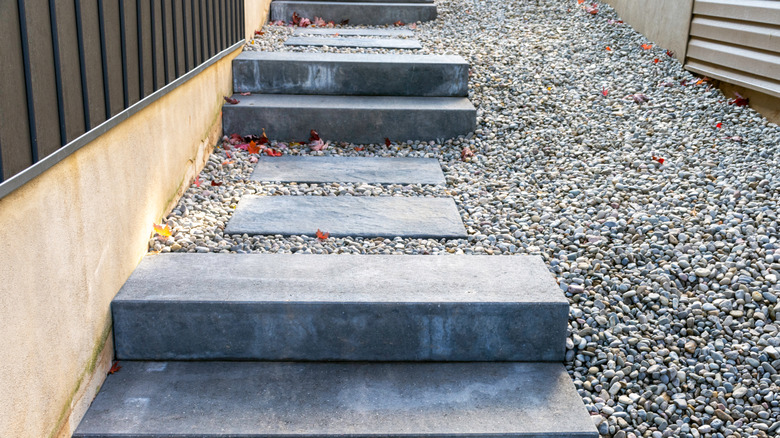Why You Should Think Twice Before Using Pea Gravel In Your Landscape
If you count yourself as one of the millions of homeowners who want a gorgeous landscape, you know that finding the ideal balance of aesthetics and functionality doesn't happen by accident. The right materials positioned just so make all the difference. Stones and pavers are commonly found in landscaping designs, thanks to their ability to add texture and structure to your property. There's one type of stone in particular, however, that you should avoid if you're hoping for a design that will look great for years.
Pea gravel is a fine stone that is commonly implemented in landscape design. It's pretty normal to see these small stones making an appearance in walkways or surrounding patio spaces. Despite the fact that freshly spread pea gravel can look nice, you may want to give it some consideration before installing this product. This is because it's simply too fine a material to provide sufficient structure to a walkway or resistance from weed growth or heavy rainfall. Additionally, pea gravel can be difficult to maintain as the seasons change and leaves begin to fall. With the lightweight nature of pea gravel, it can be difficult to remove leaves from the space without disrupting the gravel. Finally, since pea gravel is small and fine, it is only a matter of time before it becomes so ground into the soil underneath that you'll need to purchase and lay more down, thus leading to an endless and pricey maintenance cycle.
How to make the most of pea gravel and best alternatives
While pea gravel is far from the best option for paving material, perhaps you've already committed to a landscaping design that heavily relies on it. In this case, you'll want to guarantee that you do your prep work to get the most out of your investment. The fineness of pea gravel means that you'll need to lay down a barrier between the soil and the gravel, which will simultaneously aid in the prevention of weed growth. Given how easily pea gravel can be displaced during a heavy rainstorm, you'll want to ensure that you avoid placing it at the base of a rain spout or on a hill where it can be washed away. If you happen to have some pea gravel you're not sure what to do with, you can always use it to improve water control in your French drain.
Since pea gravel is very prone to slipping and being displaced when walked or driven over, it could be best to look for superior alternatives that may prove more resilient in the face of traffic. If you're hoping for a long-lasting walkway, it's recommended to use larger stones or pavers as the principal portion with pea gravel in between to hold the stones in place. For a more natural aesthetic, you can use different types of rocks like crushed stones, as the sharp edges will create a better locking effect, leading to less slippage. Ultimately, every type of landscaping resource will require maintenance to keep looking great, so be sure to choose what best resonates with your lifestyle and aesthetic goals.

